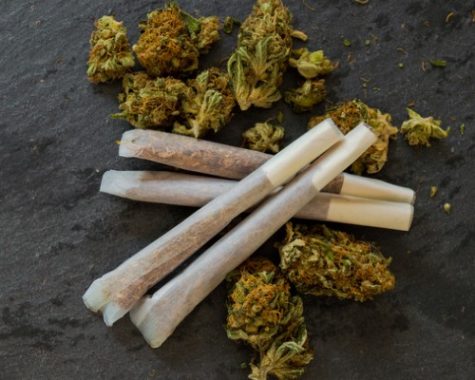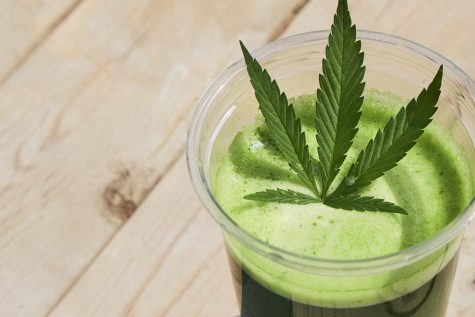Scanning technology could clarify difference between hemp and cannabis
A team of agricultural researchers based in Texas could soon be unleashing a groundbreaking piece of technology on the hemp industry. Namely, Texas A&M AgriLife – one of the first of many universities actively involved since the 1876 founding of the “Agricultural & Mechanical College of Texas” – is working hard to find a way in which hemp can be conveniently scanned using a portable and easily integratable device. The handheld “hemp scanner” gadgets are being designed specifically for use in police automobiles.
The results of Texas A&M AgriLife’s study were published in January 2020; featured in the scientific journal RSC Advances. Based on the outcome, the hemp-scanning devices will not damage the plant product in any way, but will be able to distinguish the difference between the two contrasting species of the Cannabis plant — hemp and marijuana/cannabis.
Hemp may be a species of the cannabis plant, but its properties are quite different. Unlike “marijuana” – a highly psychoactive strain of cannabis that usually contains large quantities of THC (tetrahydrocannabinol) – hemp is a strain of cannabis that is abundant in the non-psychotropic cannabinoid CBD (cannabidiol). Aside from its medical potential, hemp is also suitable for creating a wide range of products, including textiles and biofuel.
Since the 2018 Farm Bill’s passing, the value of hemp has soared in recent years; more farmers are cultivating the plant for the creation of products containing the non-psychotropic element CBD (cannabidiol). According to leader of the study – and assistant professor of biochemistry and biophysics at the Texas A&M University College of Agriculture and Life Sciences – Dimitry Kurouski, hemp is laden with medicinal compounds that can be used in the pharmaceutical field of medicine; for boundless reasons. Among the hundreds of identified cannabinoids contained in the hemp plant, CBD is one of the most well-known and intensely-researched — acknowledged for its ability to relieve the symptoms of anxiety, depression and pain.
Truckload of hemp in Texas was recently detained, inspired scanning technology
The inspiration behind the development of Texas’ hemp scanning technology emerged after an unfortunate incident involving a truckload of confiscated hemp plants. While these plants are deemed legal – as per the federal government’s approval of the 2018 Farm Bill – hemp bears visual similarities to the psychoactive species of cannabis that recreational consumers are known to enjoy.
Upon discovering the contents of the truck, a law enforcement Division near Amarillo detained thousands of pounds’ worth of hemp plants. Ultimately, this resulted in the driver being forcefully incarcerated until the plants could be properly tested and deemed legal — the cargo passed all tests. Although hemp is legal in the State of Texas, the fact that it belongs to the same plant species as cannabis means that laboratory testing is essential.
Only licensed laboratories are allowed to distinguish between psychoactive cannabis and non-psychotropic hemp. Back in 2019, lawmakers in Texas characterized the distinction between cannabis and hemp. Plants became distinguishable based on their THC (tetrahydrocannabinol) content — their psychoactive element. When a plant contains more than 0.3 percent of the psychotropic cannabinoid, it is not considered to be “hemp” and instead, falls into the “marijuana” category.
Farmers who wish to cultivate hemp legally in the State of Texas must wait a little longer. It won’t be until later in the year that hemp-growing facilities will get the green light to commence operations. By this point, farmers will understand precisely how much THC is contained in their plants; essential for ensuring they meet the required threshold for legal hemp in Texas. Anything exceeding the THC threshold will deem the plants illegal.
Existing agricultural scanner served as the foundation for hemp-identifying technology
Kurouskii praises his colleague David Baltensperger for catapulting Texas’ hemp-scanning research project and technology to the realms of success it has experienced thus far. Baltensperger assumes the role of professor of soil and crop sciences at the College of Agriculture and Life Sciences, which is based on John Kimbrough Boulevard at College Station.
Due to Baltensperger’s previous experience working alongside police officers and cultivators, Kurouski affirmed that the professor was the perfect person to collaborate with for this Texas hemp-scanning project. With his knowledge, expertise and experience in dealing with past events, Baltensperger understood the sheer level of demand that is required for a more efficient and innovative THC testing device.
Raman spectroscopy was the name of the technology utilized at Kurouski’s lab. Since Raman spectroscopy is favored for its ability to conduct fast and noninvasive tests on the nutritional content of foods and plants – inclusive of any diseases that they may be plagued with – the technology was a no-brainer. Effective yet soothing lighting was used by the team as a means of illuminating the intricate structuring of certain materials.
The Raman spectrum is important, because when analyzed, all of the Raman bands of a particular material can be identified. In addition to this, researchers can analyze individual band changes; such as the broadening, shifting, narrowing or intensity-adjusting features of a studied material. Instances of this indicate the delicate information about potential material and crystallinity advancements/abnormalities.
“Lee Sanchez was the hero who was traveling to Colorado three times, staying there in hotels and driving from one location to another. Most of those locations are old fire stations. They are not fancy greenhouses but old, shaky buildings with plants inside,” Kurouski said
It was crucial that the cannabis and hemp plants being tested by Texas A&M AgriLife were scanned immensely accurately; just like a human fingerprint would be. The collected spectra was inspected in a Texas laboratory by Kurouski and his research assistant Lee Sanchez. Testing between hemp and “marijuana” varieties were determined with 100 percent accuracy, say the experts.
“We know plants from A to Z in terms of their spectroscopic signature,” Kurouski explained. “But when we saw such a crystal-clear picture of THC that appeared in one second of spectral acquisition, that was mind-blowing.”
Hemp scanning that could be made available to public soon
There’s hope that the residents of Texas will soon be able to drive in a carefree manner if they are in possession of hemp, as opposed to cannabis. Following the successful non-invasive THC testing procedure by Kurouski’s team, the researchers are seeking out fellow researchers to collaborate with them on further tests. However, prospective tests to be carried out in the foreseeable future will be based on CBD — the non-psychoactive cannabinoid contained in both cannabis and hemp.
As a highly valuable non psychotropic substance, CBD’s diversity of use has propelled this natural plant-derived ingredient into the mainstream market. From topical lotions and broad spectrum oils, to edibles and natural pain relievers, CBD can yield major profits for farmers; so long as they know the accurate CBD content with proper testing. Furthermore, additional research could assist the team in identifying cannabinoid quantities in multifarious plant varieties, e.g. raw flower and extract.
“Our colleagues, the farmers, were positively surprised that we could identify the variety with 98 percent accuracy. That blew them away,” concluded Kurouski.










